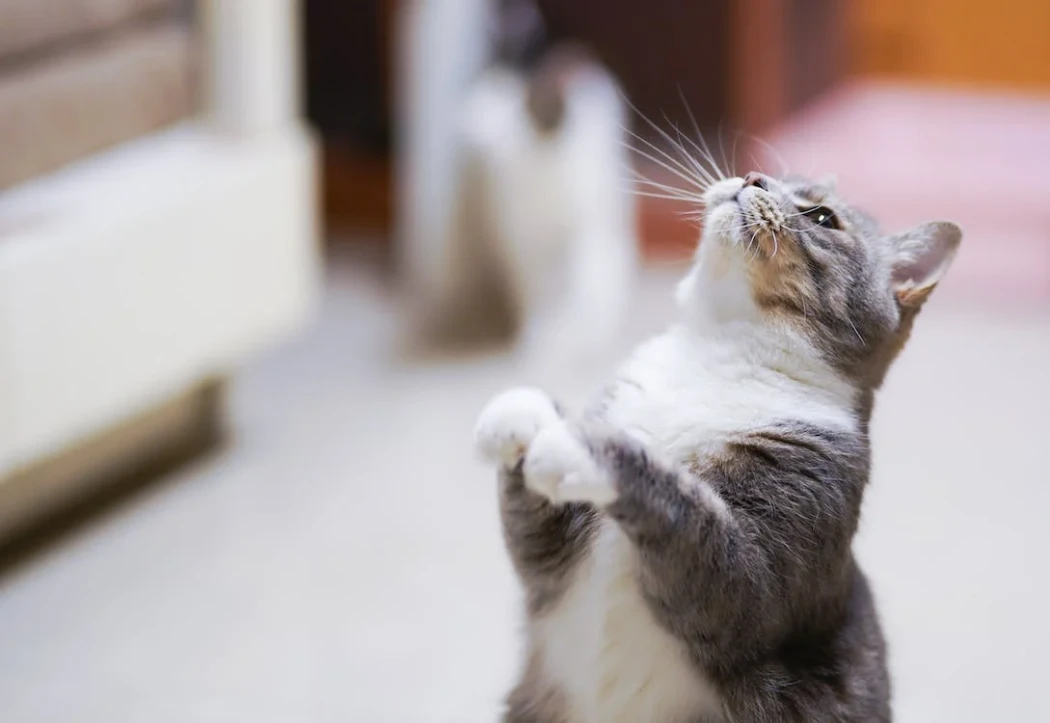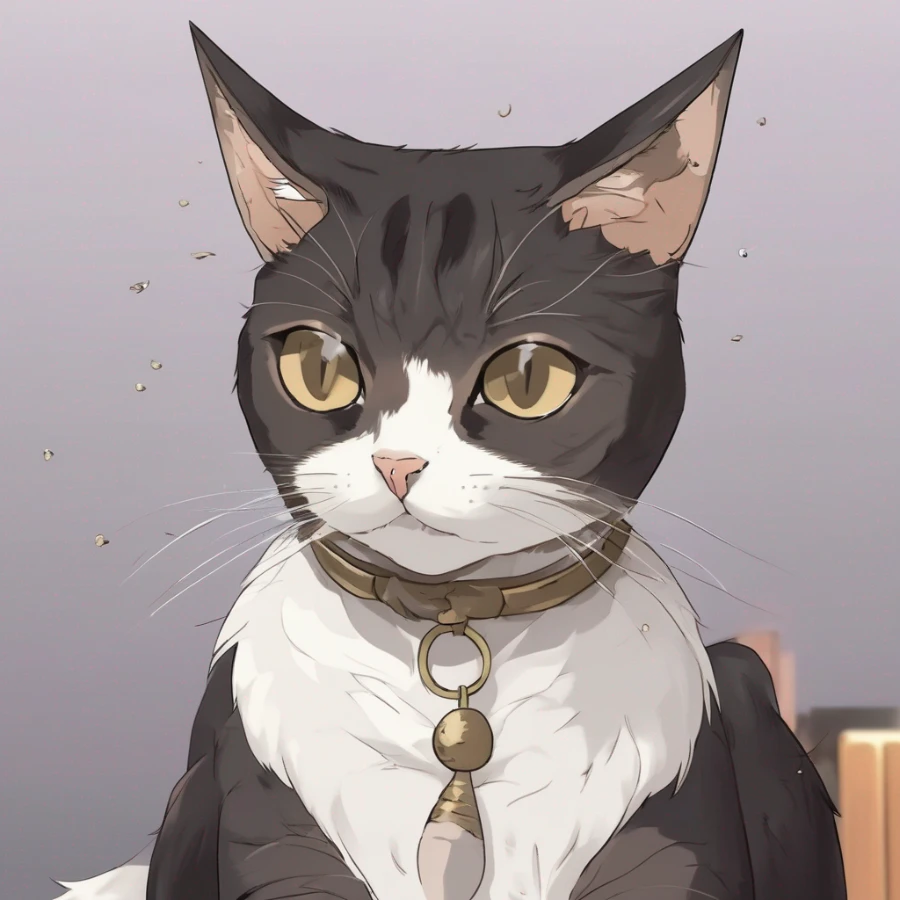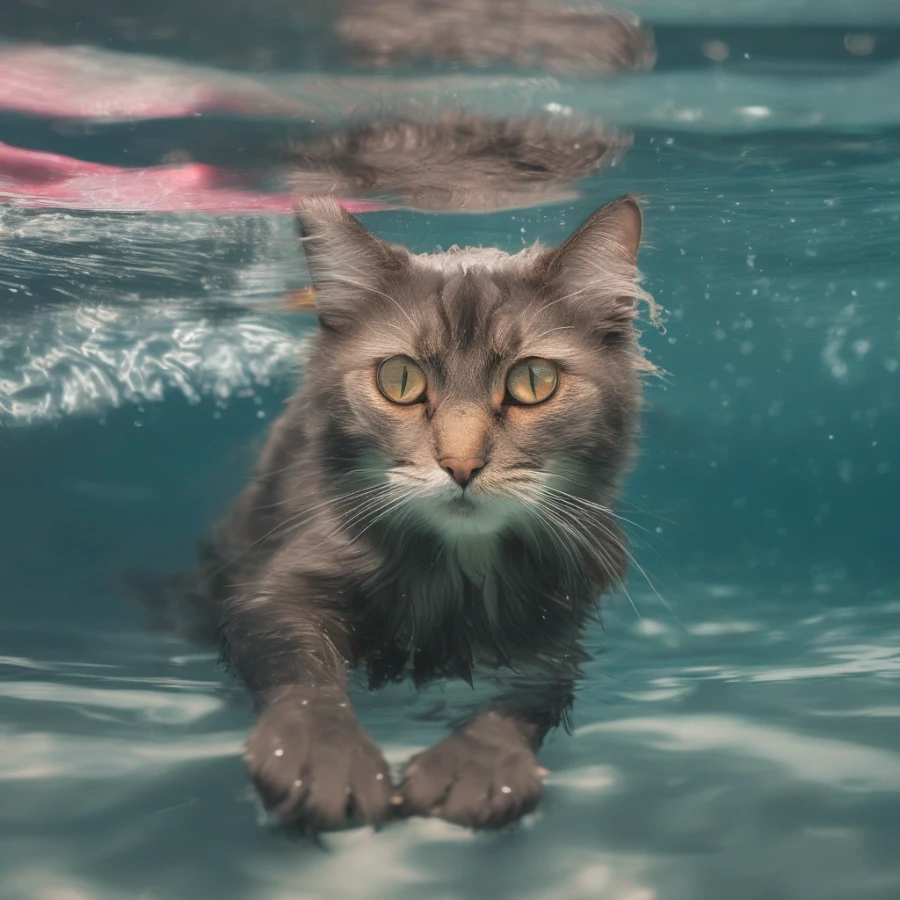Cat Losing Whiskers

Published by: Tatsiana Korshik
Time to Read: 6 Min

Cats' whiskers, or vibrissae, play a crucial role in their sensory perception and spatial awareness. Whiskers are thicker and more deeply rooted than regular fur, and they are connected to sensitive nerve endings. While it is normal for a cat to occasionally shed whiskers, if you notice excessive whisker loss or their whiskers are breaking off, it could be a sign of an underlying issue.
Several factors can contribute to whisker loss in cats. One common reason is natural shedding, where old whiskers fall out to make room for new ones. However, stress, rough handling, or accidents can also cause whisker loss. In some cases, a nutrient deficiency or medical condition may be the underlying cause.
Whisker loss in cats is generally not a cause for immediate concern, but if you notice other unusual symptoms or your cat's behavior changes, it is advisable to consult a veterinarian. They can assess your cat's overall health and provide guidance if further investigation is necessary.
To ensure your cat's well-being, avoid trimming or plucking their whiskers as it can cause discomfort and disrupt their sensory abilities. Providing a balanced diet and a stress-free environment can also help maintain healthy whiskers. Remember, whisker loss should be monitored, and if you have any concerns, consulting with a veterinarian is always recommended.
Just like regular fur, whiskers go through a growth phase followed by a resting phase and eventually shed. This shedding process allows for the replacement of old or damaged whiskers with new ones. It ensures that the cat's whiskers remain in optimal condition and continue to fulfill their sensory roles effectively.
It's important to note that whisker shedding in cats is usually a gradual and natural process. You may occasionally find shed whiskers around your home, which is normal. However, if you notice excessive whisker loss or your cat's whiskers breaking off frequently, it could be a sign of an underlying issue that requires veterinary attention.
While whisker shedding is a natural occurrence, it's crucial to avoid trimming or plucking your cat's whiskers. Whiskers are highly sensitive and cutting them can cause discomfort and disrupt your cat's ability to perceive their environment accurately. Respect your cat's whiskers and allow them to shed and regrow naturally as part of their normal grooming process.
Sensory Perception: Whiskers are highly sensitive and act as a sensory tool for cats. They can detect even the slightest changes in the environment, including air movements, vibrations, and the presence of objects or prey. This helps cats navigate their surroundings with precision, especially in low-light conditions.
Spatial Awareness: Whiskers provide cats with valuable information about the size and shape of objects around them. By sensing the proximity and contours of obstacles, cats can judge if they can fit through narrow spaces, avoid collisions, and maintain balance while climbing or jumping.
Communication and Emotions: Whiskers can indicate a cat's emotional state. When a cat is relaxed, their whiskers are typically positioned forward. When they are frightened or agitated, the whiskers may flatten against their face. Additionally, cats use their whiskers during social interactions with other cats, using them as communication tools to convey their mood and intentions.
Hunting and Prey Detection: Whiskers help cats in hunting by providing a wider field of perception. They help cats judge the distance between themselves and their prey, enhancing their accuracy when pouncing or striking.
It's important to note that whiskers are sensitive and should never be trimmed or plucked. They are deeply rooted and connected to nerve endings, so cutting them can cause discomfort and disrupt a cat's sensory abilities. Respecting and caring for your cat's whiskers is essential for their well-being and overall sensory experience.
Excessive Whisker Loss: If you notice a significant increase in the amount of whiskers your cat is shedding or if their whiskers are falling out in clumps, it may be a sign of an underlying issue. Excessive whisker loss could be indicative of a medical condition, such as a hormonal imbalance or a nutritional deficiency. In such cases, it's advisable to consult a veterinarian for a proper evaluation.
Breakage or Damage: Whiskers are sturdy and designed to withstand normal wear and tear. However, if you observe that your cat's whiskers are frequently breaking off or appear damaged, it may be worth investigating the cause. Rough handling, accidents, or the use of inappropriate grooming tools can potentially lead to whisker breakage. Assess your cat's environment and grooming practices to ensure their whiskers are not being subjected to unnecessary stress or trauma.
Changes in Behavior or Health: If your cat's whisker shedding is accompanied by other concerning symptoms or changes in behavior, it may indicate an underlying health issue. Keep an eye out for signs such as weight loss, lethargy, appetite changes, excessive grooming, or skin abnormalities. These could be indicative of an underlying medical condition, and veterinary attention should be sought.
In general, occasional whisker shedding is a normal part of a cat's hair growth cycle. However, if you notice any abnormal patterns or have concerns about your cat's whisker health, it's always best to consult with a veterinarian for a proper evaluation and guidance.
Trimming or cutting a cat's whiskers can cause discomfort and disrupt their natural sensory abilities. Cats rely on their whiskers to navigate and explore their surroundings effectively. Cutting their whiskers can disorient them, leading to confusion and potential accidents.
It's important to note that whiskers naturally shed and regrow as part of a cat's normal hair growth cycle. Shed whiskers make room for new ones, ensuring that the cat's whiskers remain in optimal condition. Allow your cat's whiskers to grow and shed naturally without interference.
Respecting your cat's whiskers is essential for their well-being and overall sensory experience. Avoid the temptation to trim or cut their whiskers, and instead, provide them with a safe and enriched environment that allows their natural sensory abilities to flourish.
Several factors can contribute to whisker loss in cats. One common reason is natural shedding, where old whiskers fall out to make room for new ones. However, stress, rough handling, or accidents can also cause whisker loss. In some cases, a nutrient deficiency or medical condition may be the underlying cause.
Whisker loss in cats is generally not a cause for immediate concern, but if you notice other unusual symptoms or your cat's behavior changes, it is advisable to consult a veterinarian. They can assess your cat's overall health and provide guidance if further investigation is necessary.
To ensure your cat's well-being, avoid trimming or plucking their whiskers as it can cause discomfort and disrupt their sensory abilities. Providing a balanced diet and a stress-free environment can also help maintain healthy whiskers. Remember, whisker loss should be monitored, and if you have any concerns, consulting with a veterinarian is always recommended.
Why Do Cats Shed Their Whiskers?
Cats shed their whiskers as a natural part of their hair growth cycle. Whiskers, also known as vibrissae, are specialized sensory hairs that are thicker, stiffer, and more deeply rooted than regular fur. They serve important functions in a cat's daily life, including providing sensory information about their surroundings, aiding in balance and navigation, and expressing emotions.Just like regular fur, whiskers go through a growth phase followed by a resting phase and eventually shed. This shedding process allows for the replacement of old or damaged whiskers with new ones. It ensures that the cat's whiskers remain in optimal condition and continue to fulfill their sensory roles effectively.
It's important to note that whisker shedding in cats is usually a gradual and natural process. You may occasionally find shed whiskers around your home, which is normal. However, if you notice excessive whisker loss or your cat's whiskers breaking off frequently, it could be a sign of an underlying issue that requires veterinary attention.
While whisker shedding is a natural occurrence, it's crucial to avoid trimming or plucking your cat's whiskers. Whiskers are highly sensitive and cutting them can cause discomfort and disrupt your cat's ability to perceive their environment accurately. Respect your cat's whiskers and allow them to shed and regrow naturally as part of their normal grooming process.
What Are Whiskers For?
Whiskers, also known as vibrissae, serve several important functions for cats. These specialized sensory hairs are located on the sides of a cat's face, above their eyes, on their chin, and on the back of their front legs. Here are some key roles that whiskers play:Sensory Perception: Whiskers are highly sensitive and act as a sensory tool for cats. They can detect even the slightest changes in the environment, including air movements, vibrations, and the presence of objects or prey. This helps cats navigate their surroundings with precision, especially in low-light conditions.
Spatial Awareness: Whiskers provide cats with valuable information about the size and shape of objects around them. By sensing the proximity and contours of obstacles, cats can judge if they can fit through narrow spaces, avoid collisions, and maintain balance while climbing or jumping.
Communication and Emotions: Whiskers can indicate a cat's emotional state. When a cat is relaxed, their whiskers are typically positioned forward. When they are frightened or agitated, the whiskers may flatten against their face. Additionally, cats use their whiskers during social interactions with other cats, using them as communication tools to convey their mood and intentions.
Hunting and Prey Detection: Whiskers help cats in hunting by providing a wider field of perception. They help cats judge the distance between themselves and their prey, enhancing their accuracy when pouncing or striking.
It's important to note that whiskers are sensitive and should never be trimmed or plucked. They are deeply rooted and connected to nerve endings, so cutting them can cause discomfort and disrupt a cat's sensory abilities. Respecting and caring for your cat's whiskers is essential for their well-being and overall sensory experience.
When to Worry About Whisker Shedding?
Whisker shedding in cats is a natural and normal process. It's not uncommon to find shed whiskers around your home from time to time. However, there are a few instances when whisker shedding may be a cause for concern:Excessive Whisker Loss: If you notice a significant increase in the amount of whiskers your cat is shedding or if their whiskers are falling out in clumps, it may be a sign of an underlying issue. Excessive whisker loss could be indicative of a medical condition, such as a hormonal imbalance or a nutritional deficiency. In such cases, it's advisable to consult a veterinarian for a proper evaluation.
Breakage or Damage: Whiskers are sturdy and designed to withstand normal wear and tear. However, if you observe that your cat's whiskers are frequently breaking off or appear damaged, it may be worth investigating the cause. Rough handling, accidents, or the use of inappropriate grooming tools can potentially lead to whisker breakage. Assess your cat's environment and grooming practices to ensure their whiskers are not being subjected to unnecessary stress or trauma.
Changes in Behavior or Health: If your cat's whisker shedding is accompanied by other concerning symptoms or changes in behavior, it may indicate an underlying health issue. Keep an eye out for signs such as weight loss, lethargy, appetite changes, excessive grooming, or skin abnormalities. These could be indicative of an underlying medical condition, and veterinary attention should be sought.
In general, occasional whisker shedding is a normal part of a cat's hair growth cycle. However, if you notice any abnormal patterns or have concerns about your cat's whisker health, it's always best to consult with a veterinarian for a proper evaluation and guidance.
Can You Cut a Cat’s Whiskers?
Cutting a cat's whiskers is not recommended and should be avoided. Whiskers, also known as vibrissae, serve important sensory functions for cats. They are deeply rooted and connected to nerve endings, providing valuable information about their environment, balance, and spatial awareness.Trimming or cutting a cat's whiskers can cause discomfort and disrupt their natural sensory abilities. Cats rely on their whiskers to navigate and explore their surroundings effectively. Cutting their whiskers can disorient them, leading to confusion and potential accidents.
It's important to note that whiskers naturally shed and regrow as part of a cat's normal hair growth cycle. Shed whiskers make room for new ones, ensuring that the cat's whiskers remain in optimal condition. Allow your cat's whiskers to grow and shed naturally without interference.
Respecting your cat's whiskers is essential for their well-being and overall sensory experience. Avoid the temptation to trim or cut their whiskers, and instead, provide them with a safe and enriched environment that allows their natural sensory abilities to flourish.



